Looking for a specific Jumanji rule? | Setup | Playing the Game | Spaces | Winning the Game | Losing the Game | Variants | FAQ | Components |
Objective for Jumanji
The objective of the game is to be the first player to reach the center of the gameboard and yell “Jumanji”.
Setup
- Place the center piece onto the gameboard. Set the gameboard in the center of the table.
- Shuffle the Danger cards and place them facedown on the draw space of the gameboard.
- Each player chooses a pawn and places it on the corresponding colored start space.
- Place the rhino figure on the corresponding spot on the gameboard.
- Each player takes one of the rescue dice.
- The player who suggested playing the game goes first. This player will take the number die and the timer.
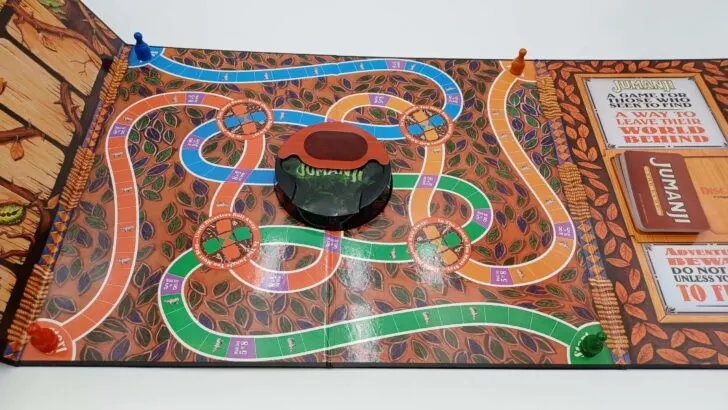
Playing the Game
You will begin your turn by rolling the number die. You will then move your pawn towards the center of the gameboard the number of spaces that you rolled. When moving your pawn you must move the full number of spaces you rolled unless the rhino blocks your path or you would move past the center space.
After you move your pawn, you will look at the space you landed on. You will take an action based on the space that your pawn landed on. You will only take the action from a space if you moved to the space on your own turn.
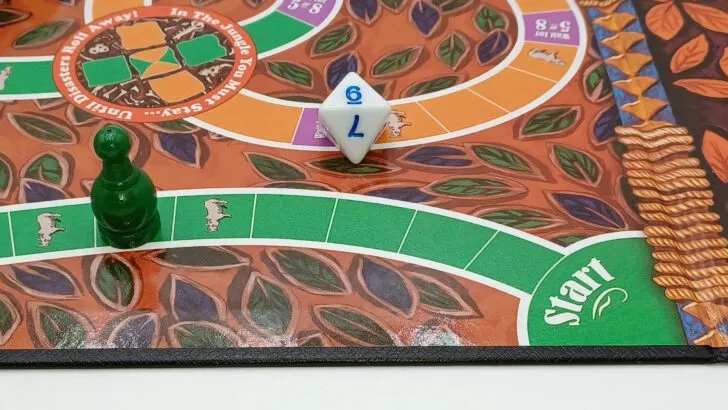
Should you be unable to move due to the rhino or rolling a number that would put you past the finish space, you will remain on your current space and take the corresponding action.
If you ever land on a space that is already occupied by another player, you will move your pawn to the next unoccupied space.
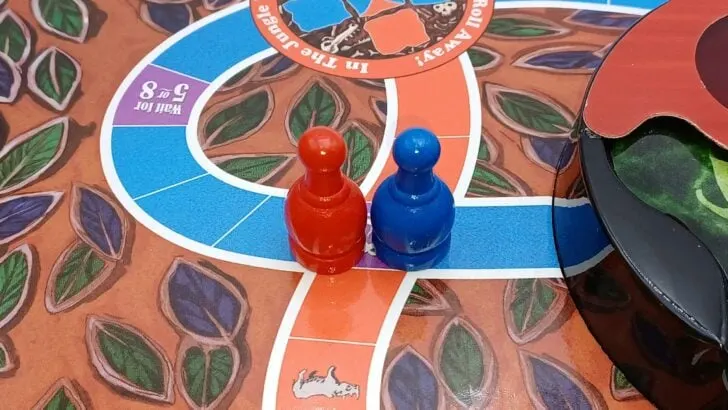
After you take the action from the space you landed on, play will pass to the next player clockwise (left). Pass the next player the number die and the timer.
Spaces of Jumanji
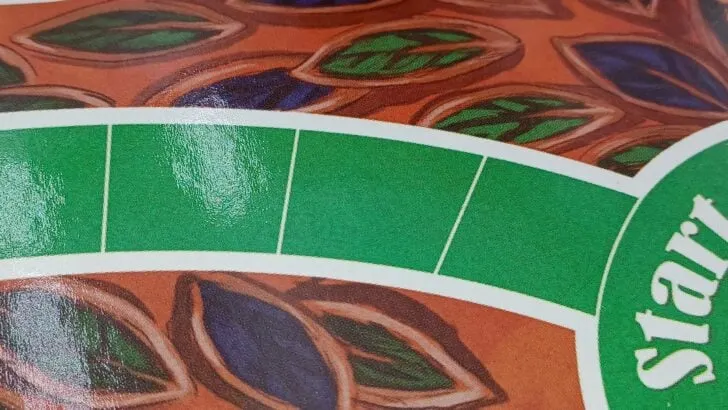
Blank Spaces
When you land on a blank space, draw the top card from the Danger Pile. Slide the card underneath the decoder. Each card will have two important pieces of information on it. The symbol in the top left corner is the secret symbol that the players will have to roll. The number in the top right corner determines how many spaces that the players may potentially move.
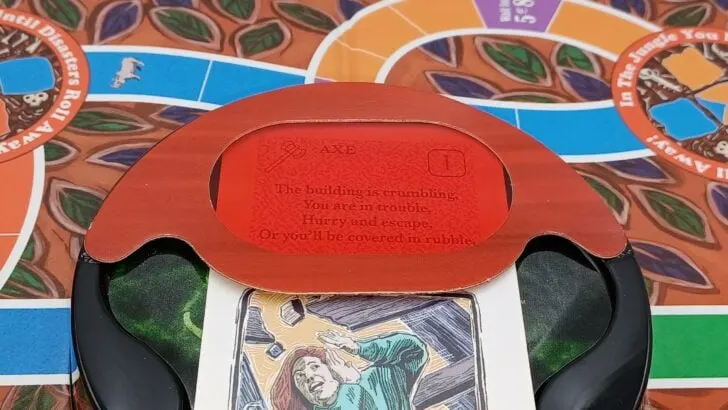
The player who landed on the space turns over the timer. The rest of the players (not including the player who landed on the space) start rolling their rescue die. Each player is trying to roll either the secret symbol from the card or the sand timer symbol. The sand timer symbol is wild. If you roll one of the symbols, you can stop rolling your die. If you roll one of the other symbols, you will roll the die again. The players keep rolling their die until the timer runs out. When the timer runs out you will check to see if all of the players rolled the secret symbol or a sand timer.
Results of the Danger Card
If all of the players rolled one of the correct symbols, the player who landed on the space is safe. All of the other players will move their pawns forward a number of spaces equal to the number from the Danger card. They will ignore the effect of the space that they landed on. Then discard the Danger card.
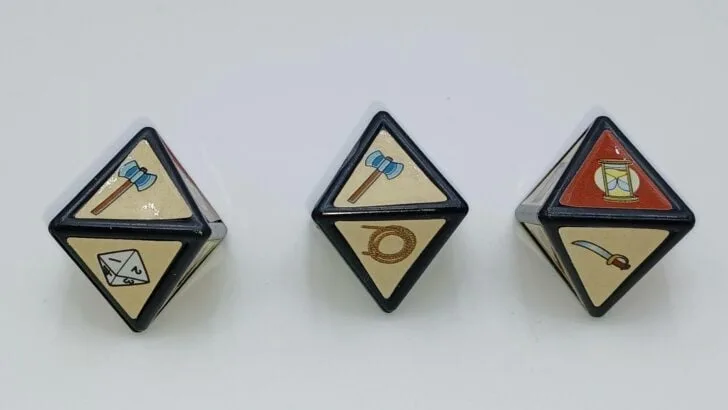
If one or more of the players fail to roll an appropriate symbol, the player who landed on the space moves their pawn back spaces equal to the number on the danger card. All of the other players stay on their current space.
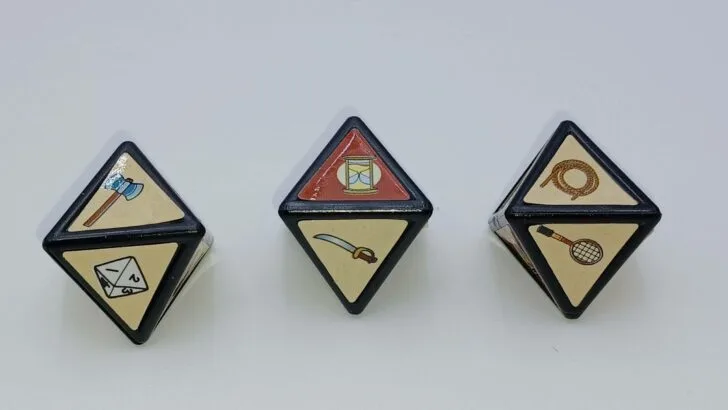
Place the danger card face up on one of the spaces on the Doomsday Grid.
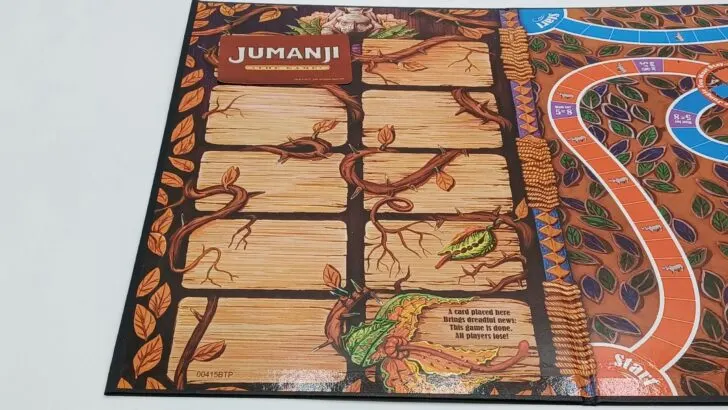
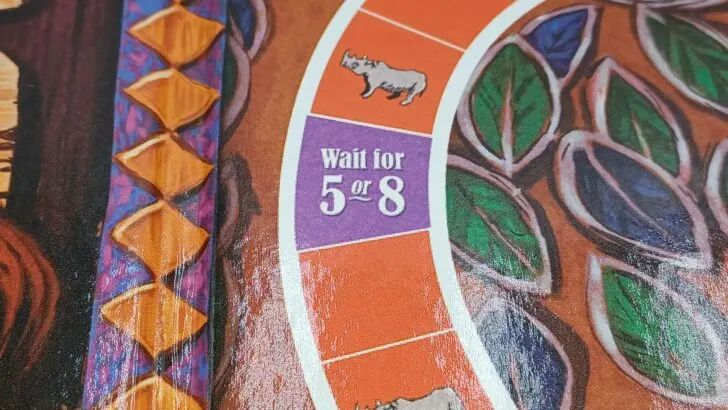
Wait For 5 or 8 Spaces
When you land on this space, pass the number die to the player on your left. They will roll the die. If they roll a five or eight, you stay on your current space. If they roll any other number they will pass the die to the player on their left. You will move your pawn back one space.
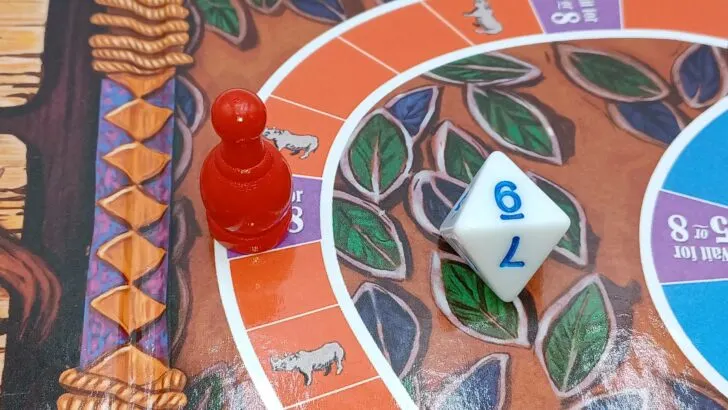
The next player then rolls the die. If they also fail to roll a five or eight, you move back another space. This continues until a player rolls a five or eight. Should you move back to your start space, the players will stop rolling the die.
The official Jumanji rules for newer versions of the game say “When moving your pawn backward follow the directions for any space you move onto.” I believe this is a typo and should have said to not follow the directions for any space you move onto. This matches the rules for older versions of the game, and it would be a mess having to deal with every single space if it took several rolls for a player to roll a five or eight.
After one of the players roll a five or eight, play continues with the player to the left of the player who landed on the Wait for 5 or 8 space.
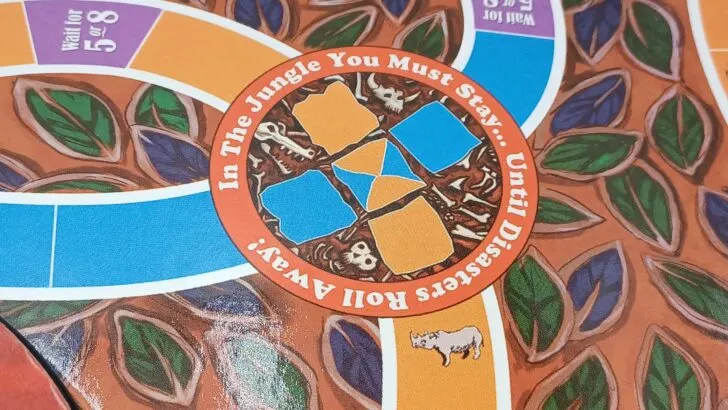
Jungle Spaces
Should you land on a jungle space, all of the players are trapped in the jungle. The players will draw a Danger card and place it in the decoder. The process to avoid the danger is the same as a blank space. There is a symbol and a number on the card. All of the players, including the player that landed on the space, must roll the symbol or an hourglass on their die. They must roll one of the symbols before the timer runs out. Once you roll one of the symbols, you will stop rolling your die.
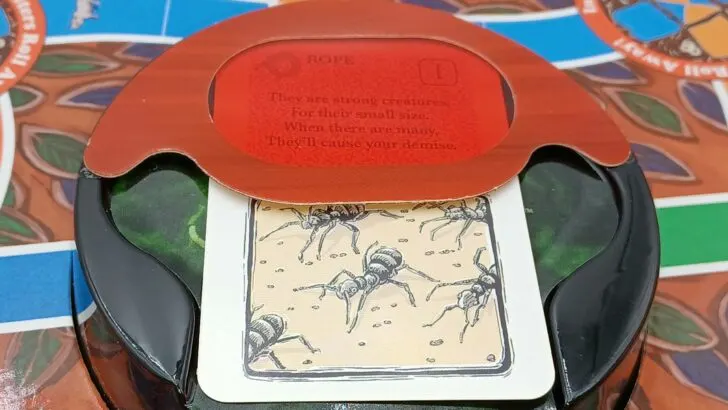
If all of the players successfully roll one of the symbols, everyone moves their pawns forward the number of spaces shown on the card. None of the players take the action of the space they move onto. Then discard the Danger card.
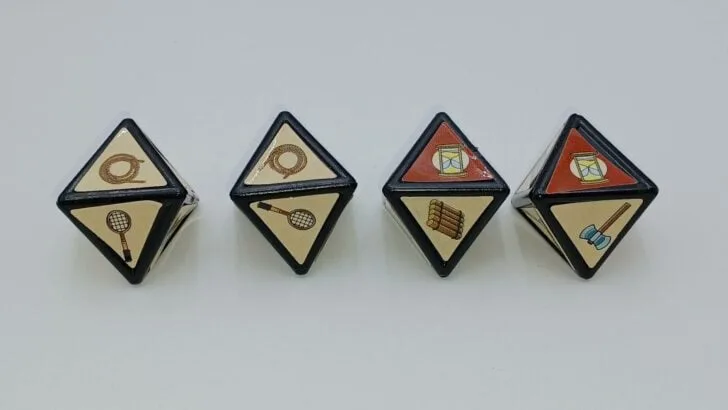
If one or more of the players fail to roll the right symbol, the Danger card is placed on an empty Doomsday Grid space. Another Danger card is drawn and players try to complete that card in time. Players will keep drawing cards until they successfully complete one of them. Multiple cards can be added to the Doomsday Grid due to a jungle space.
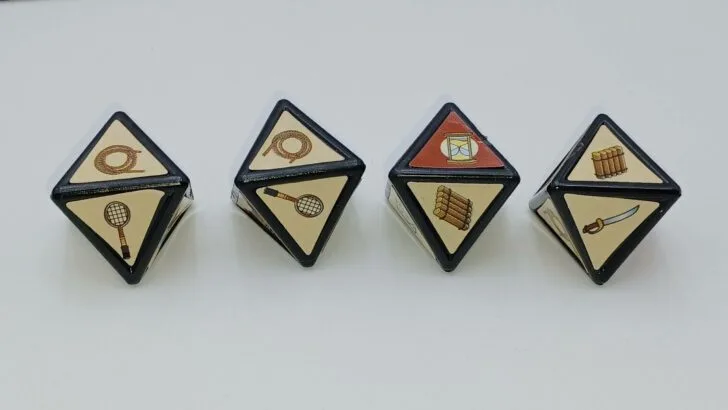
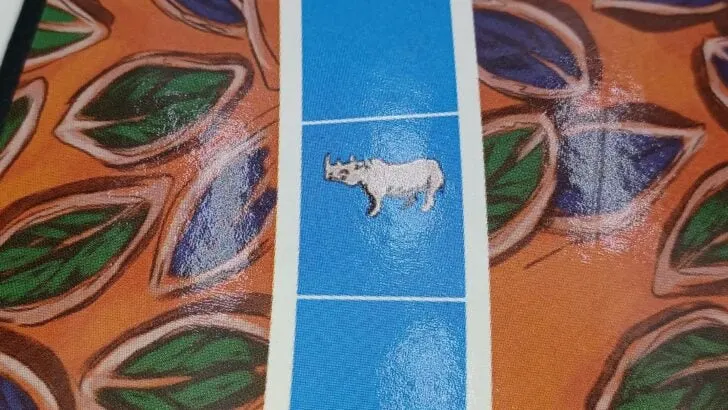
Rhino Spaces
When a player lands on the rhino space they have the option to move the rhino pawn. The player can move the rhino pawn one space in front of any of the player pawns. You may not place it on the center space. The rhino blocks the movement of the player(s) stuck behind it.
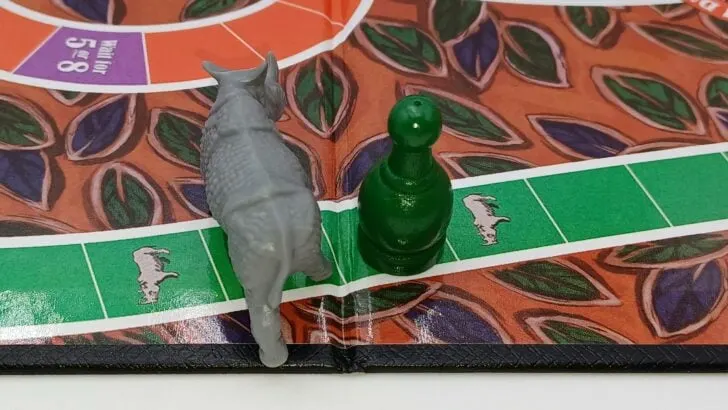
There are only two ways you can move past the rhino. First another player can land on a rhino space and move it to a different space. Otherwise you will have to roll an even number to move past the rhino. When a player rolls an even number they will move past the rhino the corresponding number of spaces and take the action of the space they landed on. The rhino is returned to its start space.
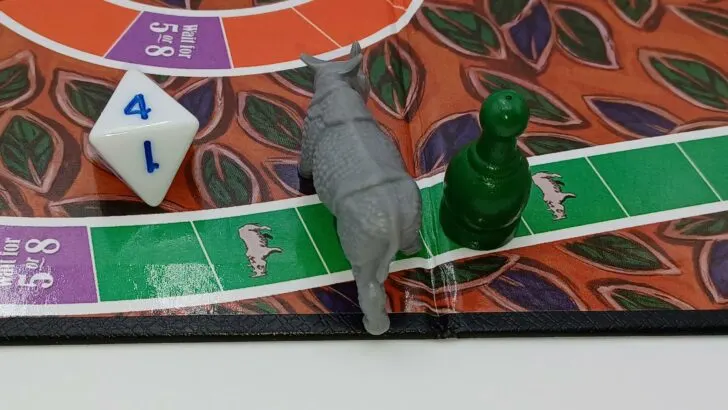
If you roll an odd number you won’t move your pawn. You will have to take the action of your current space.
If a rhino is blocking you and you ever have to move back spaces, the rhino will follow you so it remains one space in front of you.
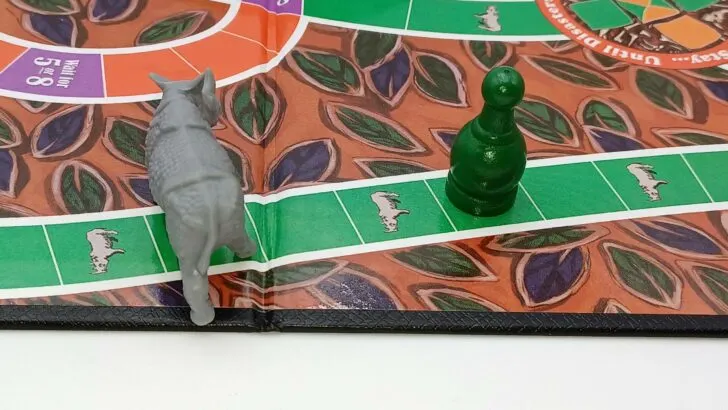
Winning the Game
In order to win the game, you have to reach the final space by exact count. You can reach the final space by either rolling the correct number on the die or by moving after helping out on a Danger card. When you land on the final space, you will yell out “Jumanji” as quickly as you can. You will then win the game. If multiple people land on the finish space at the same time, the first player to yell out Jumanji wins the game.
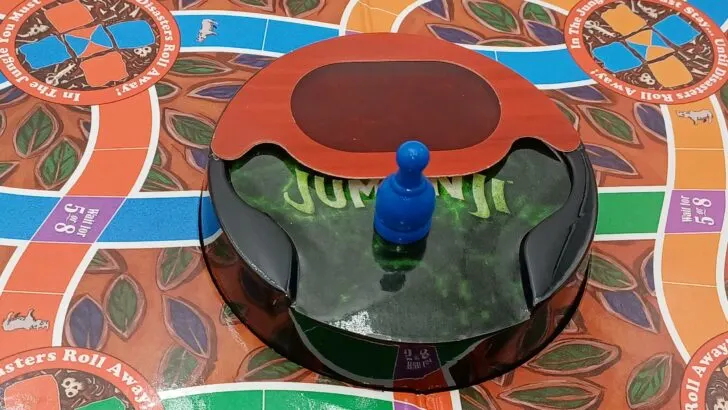
If you ever have to move more spaces than the number of spaces remaining, you won’t move your pawn any spaces. You will take the action of your current space.
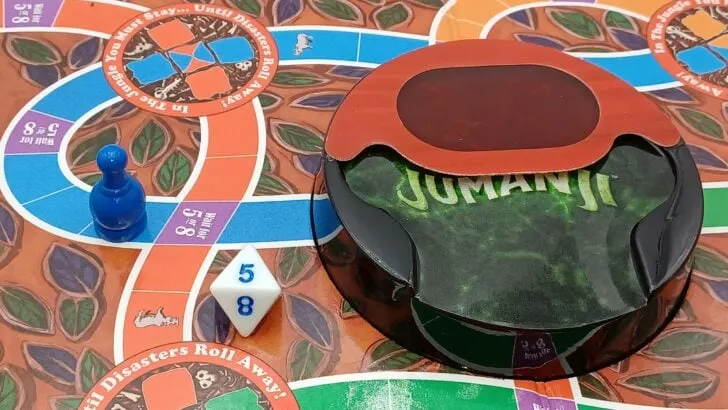
Losing the Game
Throughout the game you will be adding Danger cards to the Doomsday Grid. If all of the spaces on the grid are filled with cards, all of the players lose the game. You will then have to play another game until someone wins.
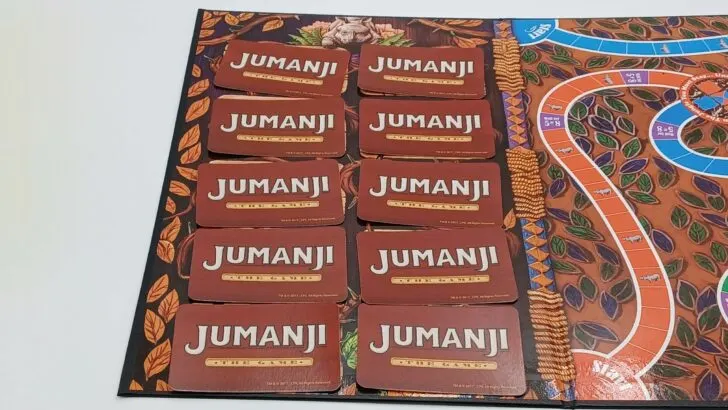
Variant Rules
If you want to add some additional challenge to the game you can begin the game with 1-6 Danger cards already on the Doomsday Grid.
When you are playing with only two players you can choose to not let the hourglass count as a wild when rolling for Danger cards.
If you would like to see our thoughts on the game, check out our Jumanji Review.
Jumanji FAQ
If you have any questions about how to play the game, leave a comment below on this post. I will try to answer any questions asked as best and as quickly as possible.
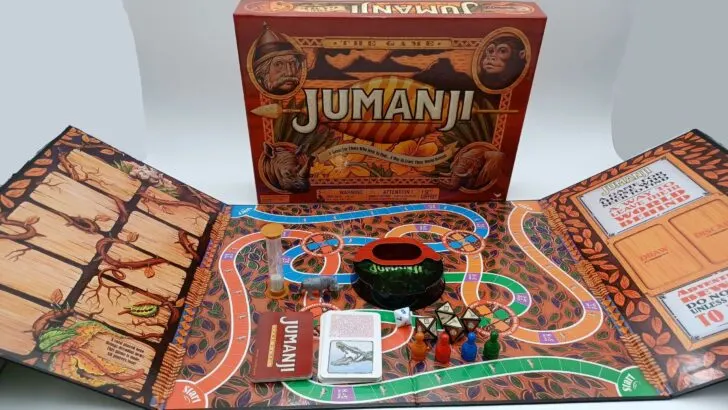
Components
- Gameboard
- 4 Pawns
- Rhino Figure
- Sand Timer (approximately 10 seconds)
- Die (die sides are 1-8)
- 4 Rescue Dice
- 30 Danger Cards
- 1 Card Decoder
- Instructions
Year: 1995 | Publisher: Cardinal, Milton Bradley
Genres: Family, Roll and Move
Ages: 5+ | Number of Players: 2-4 | Length of Game: 45 minutes
Difficulty: Light | Strategy: Light | Luck: High
For more board and card game rules/how to plays, check out our complete alphabetical list of card and board game rules posts.

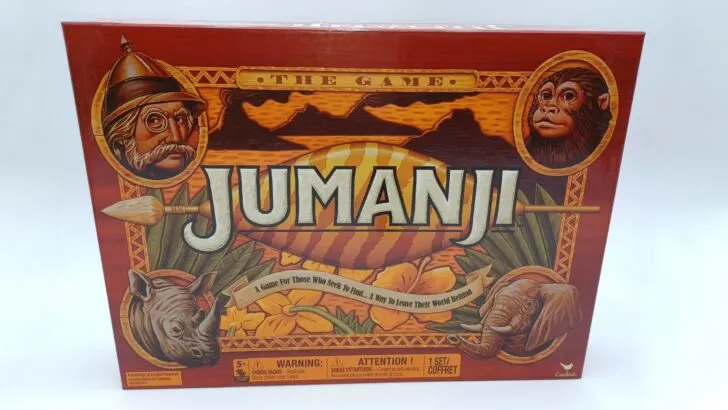
Jumanji Board Game Review - Geeky Hobbies
Wednesday 31st of January 2024
[…] you would like to see a full explanation of how to play the game, check out our Jumanji Rules […]